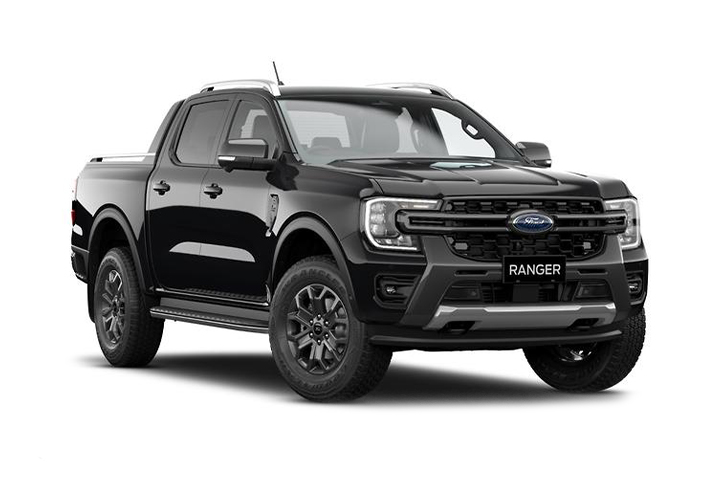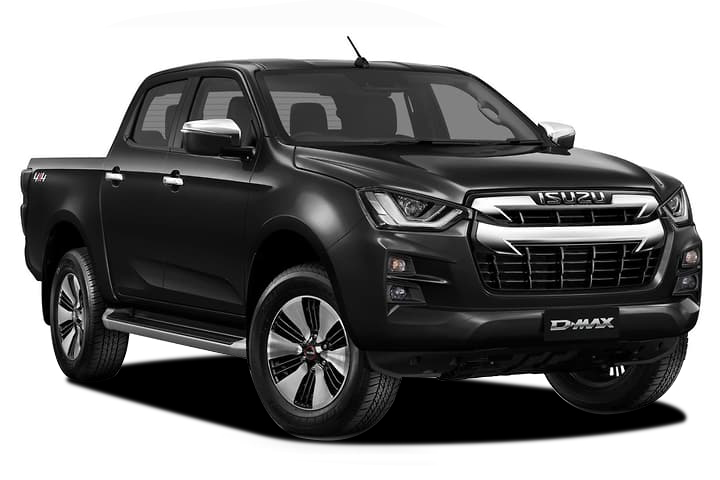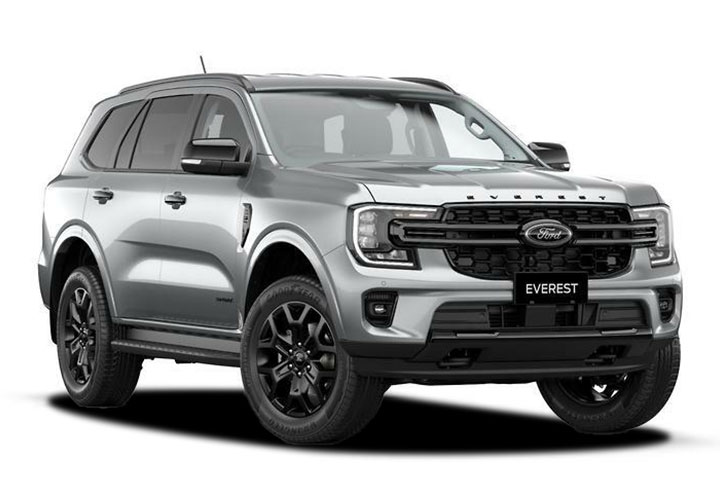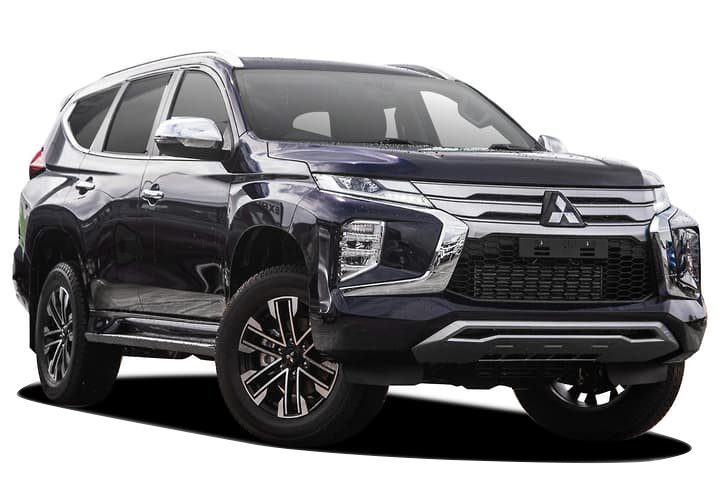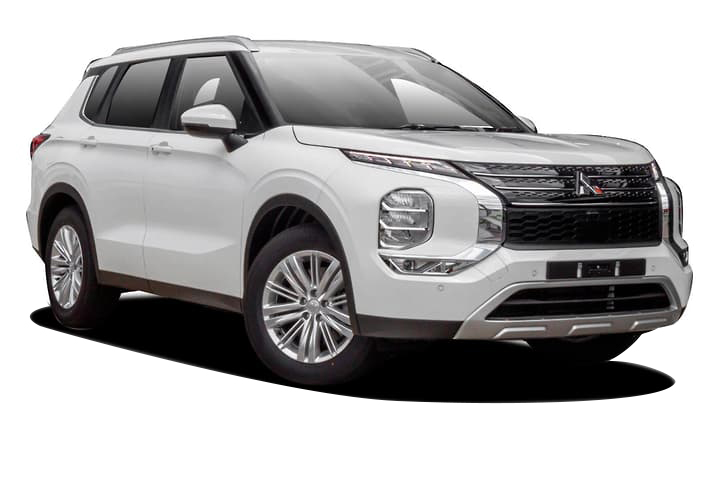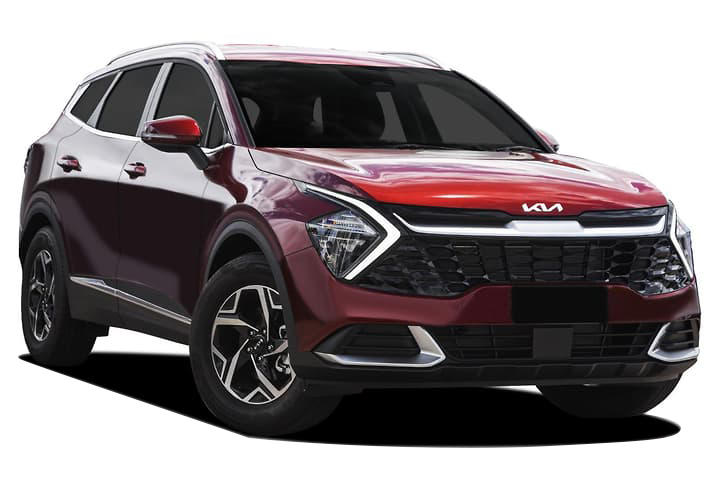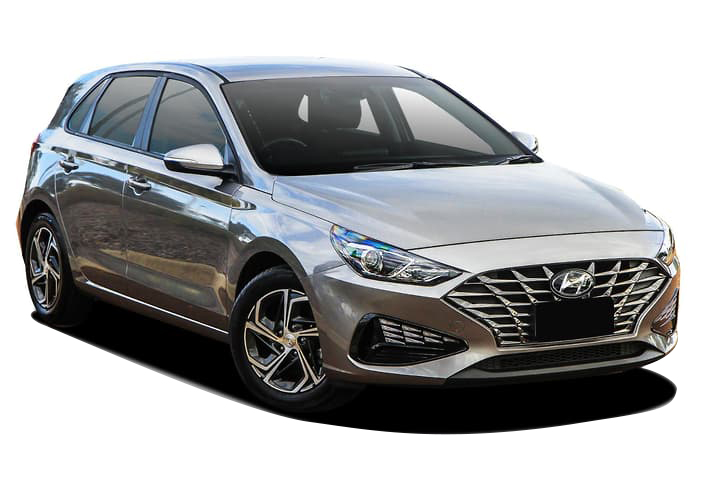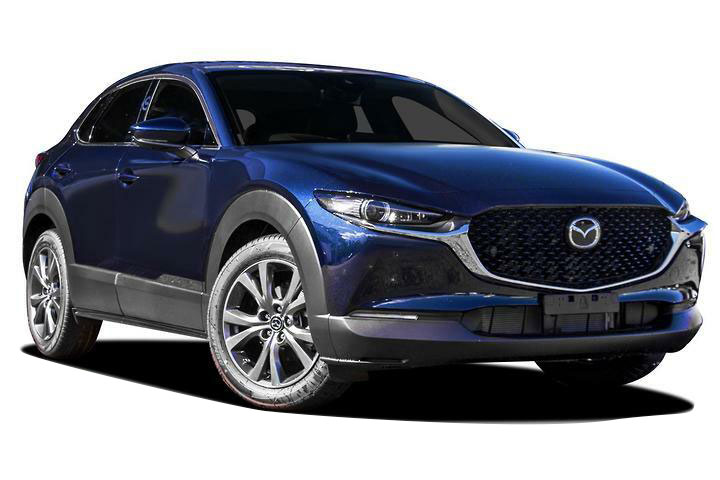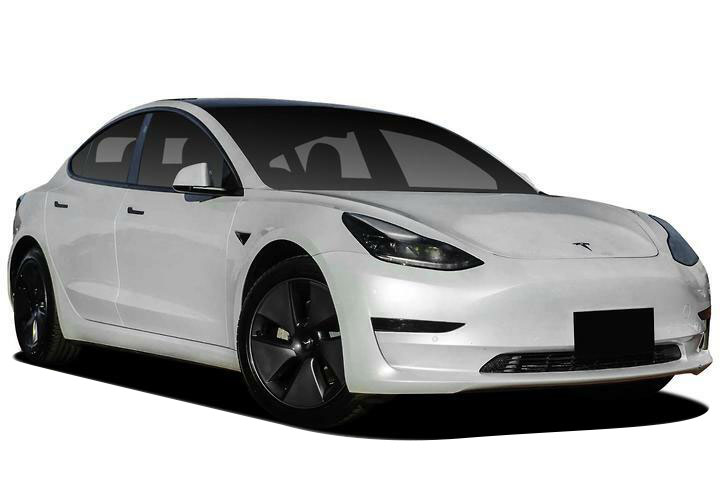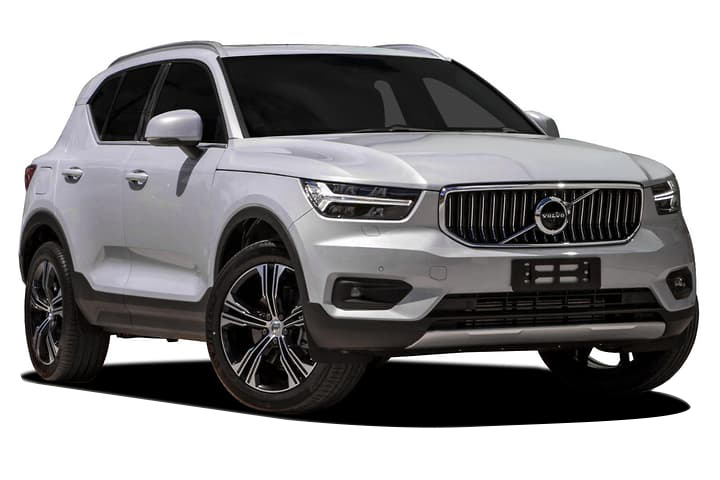It’s footy finals time and to get in the spirit, we’ve pitted some bestselling vehicles head-to-head with up-and-comers in their category. We’ll be comparing their performance, design and tech, practicality, and value. Let’s kick-off!
Battle of the Utes
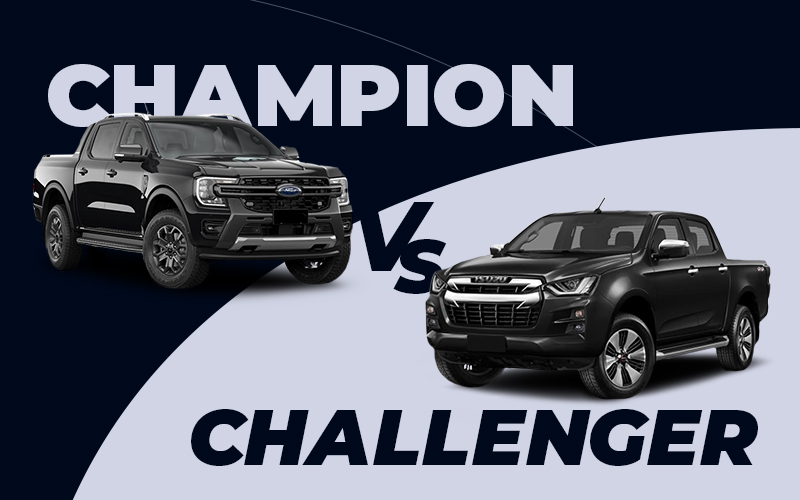
Champion: Next-Gen Ford Ranger VS Challenger: Isuzu D-MAX
The Next-Gen Ford Ranger has been redesigned for extra capability at both work and play, with new tech like the clever zone perimeter lighting system for camping or working at night.
It has a beastly new 3.0L V6 turbo-diesel engine option and can tow 3,500kg. The tray now fits a standard Euro pallet across the range.
Engineered for Australian conditions, the Isuzu D-MAX is a great everyday workhorse. It was named ‘Best Dual-Cab Ute’ in the Drive ‘Car of the Year awards for both 2021 and 2022 due to its solid performance and outstanding standard features.
It represents great value, with a wide range of variants including single and king cab, auto and manual, 4x4 and 4x2.
Whether you take on the Next-Gen Ford Ranger or the Isuzu D-MAX, you’ll get an incredibly capable vehicle that will make you look like a pro, wherever you go.
Large SUVs go head-to-head
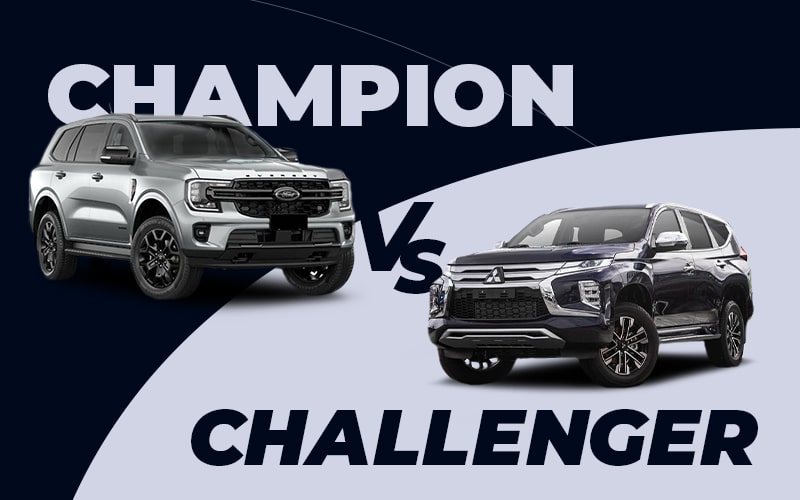
Champion: Ford Everest VS Challenger: Mitsubishi Pajero Sport
The Next-Gen Ford Everest takes capability even further with its tough exterior, new V6 turbo-diesel engine option and 3,500kg towing.
The slick range of onboard tech includes a 10.1” or 12” touchscreen featuring a state-of-the-art communication and entertainment system with gesture control. Seating up to seven, the third-row seating in the Next-Gen Everest is truly spacious.
The Mitsubishi Pajero Sport features a 2.4L turbo-diesel engine and tows up to 3,100kg. It has an aggressive new front and a sharp rear design; plus, everything you need for effortless journeys for up to seven occupants.
At a slightly lower starting price point, the Pajero Sport is a solid investment for your family. If you need it, the Next-Gen Everest offers next-level capability.
Tough choice either way!
Family favourites face-off
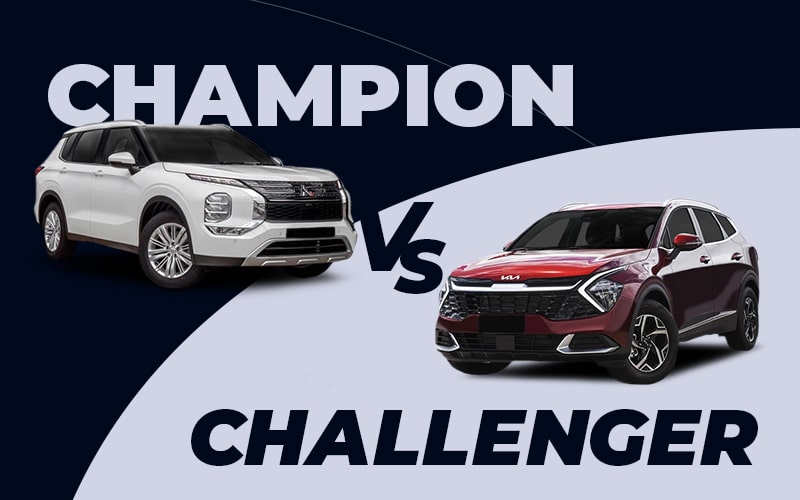
Champion: Mitsubishi Outlander VS Challenger: Kia Sportage
The Mitsubishi Outlander has been completely redesigned with a new look, a new engine, as well as a host of modern new features.
Tech is ample, with great standard safety features, push-button start, smartphone connectivity and a hands-free powered tailgate on higher grades.
The Outlander’s trump card is the option of seven seats across all variants.
The latest Kia Sportage features cool new styling, with a futuristic grille and boomerang-shaped LED daytime running lights. Kia offers excellent tech across the range. The Sportage also has a roomy 543L boot, plenty big enough for kids and gear.
Starting price for the Outlander is a little higher than the Kia Sportage, but both offer a lot for your money.
As Drive ‘Car of the Year overall winner for 2022, the Kia Sportage is one to watch.
Clash of the compact cars
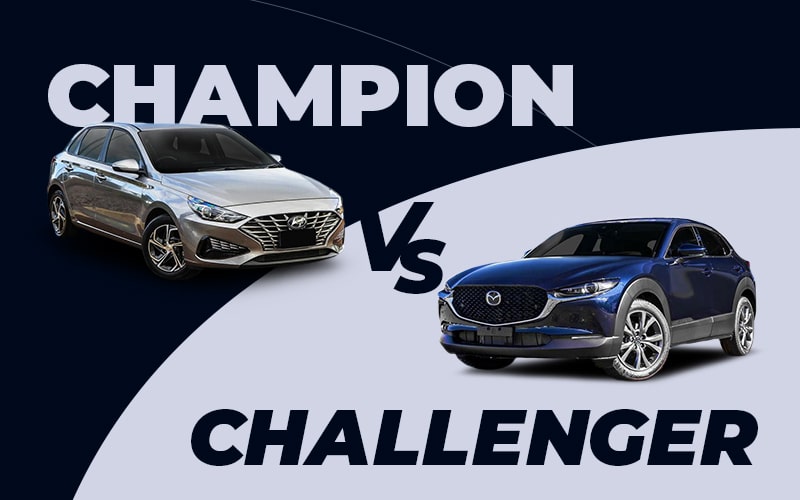
Champion: Hyundai i30 VS Challenger: Mazda CX-30
The Hyundai i30 is one of Australia’s best-selling small cars due to its style, versatility and great tech. Standard features include a rear camera and sensors, Smart Cruise Control with Stop & Go, plus keyless entry.
For a compact car, the Hyundai i30 has a decent 395L of boot space, vs 317L in the Mazda CX-30.
The Hyundai i30 hatch entry-level model is great value, or you can step up to the sportier N-Line range.
The up-and-coming Mazda CX-30 compact SUV recently won the 2021 Wheels Car of the Year. It is beautiful to drive, feels upscale and has a rich equipment list. All models have Adaptive Cruise Control with Stop & Go, Automatic Emergency Braking and premium front seats for long-distance comfort.
The Mazda CX-30 has a slightly higher starting price point, with a variety of grades to choose from right up to top spec and hybrid models.
The electrifying EV encounter
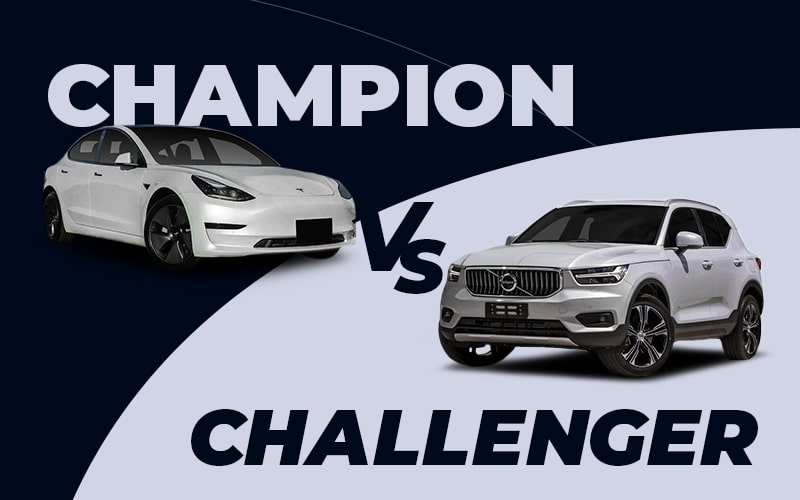
Champion: Tesla Model 3 VS Challenger: Volvo XC40 Recharge
Tesla Model 3 is the world’s biggest-selling electric car, selling 12,000 units in Australia in 2021 alone. The base model now drives up to 491km per charge, with higher grades up to 602km. Fast recharge through the Tesla Supercharger network takes just 15mins for up to 299km.
Well-known for its futuristic good looks and tech, ‘standard’ features include a panoramic glass roof, and too many automated technology and safety features to list!
For day-to-day usage, the Tesla ticks all the boxes, with fantastic boot space and an 88L ‘frunk’ under the bonnet.
Like all EVs, the 2022 Tesla Model 3 attracts a premium price – however, you also benefit from Tesla’s market-leading EV expertise.
The Volvo XC40 Recharge is a fully electric take on the popular crossover SUV, perfect for family life with up to 510km range. You can fast charge 10-80% in just 28 minutes.
Its touchscreen infotainment system by Google has excellent interconnectivity – you can even turn off the lights at home. The XC40 Recharge also features the revolutionary convenience of one-pedal driving – to brake, simply release the accelerator. It’s also family-friendly with a 419L boot, up to 1,500kg towing, and generous space for passengers.
Entry-level pricing for the XC40 recharge starts slightly higher than the Tesla Model 3, but in a similar ballpark.
Favourite or family, the choice is yours!

